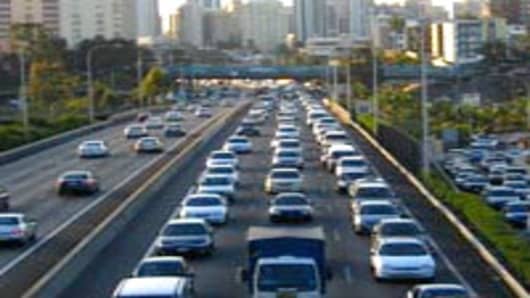As the weather gets nicer, people tend to spend more time in their cars and start to plan road trips or family getaways. You may have already done the routine springtime vehicle maintenance tasks, such as removing the snow tires. Perhaps you've even waxed the car thoroughly, replacing that grimy sludge and salt of winter with a glossy shine.
However, you may not necessarily be ready to hit the road just yet: You may be overlooking important safety issues. These issues can be costly -- not to mention dangerous -- if you don't take care of them immediately.
Here are our top 10 overlooked auto safety issues:
Missing air bags. A new report from the National Highway Traffic Safety Administration, or NHTSA, finds that nearly one in five fatal accidents involves cars with missing air bags. This is something that should concern anyone who has bought a previously owned car. Don't assume you're in the clear just because there are no signs of crash-related damage or repair work -- air bags can deploy as a result of low-speed collisions that may cause little or no damage. Check the vehicle's history using a service such as Carfax, or ask your mechanic to check for signs of prior air-bag deployment.
Compromised bumpers. If you've had any type of bump or collision, including a minor fender bender, or if you own a used car with an unknown past, this may be a concern. Even if bumpers look fine, they may not be OK. Joe Wiesenfelder, senior editor of Cars.com, says, "If your car has been rear-ended lightly or the bumpers were otherwise struck, have a mechanic or body shop check it out. Nowadays, most bumpers use a dense foam material to absorb impact, but they only work once. Even if they show no signs from the outside, the underlying structure may be compressed, which means the next mishap could cause greater injury and/or damage than the first one did."
_____________________________________
More Auto Advice From Bankrate.com:
_____________________________________
Damaged or rusted brake lines. Brake lines can be vulnerable to rust and breakage. This is especially true if you live in an area with rough winters -- many of the chemicals used to treat roads contain corrosive chemicals that can damage brake lines. Unlike some other brake problems, damaged brake lines don't give telltale signs such as squealing or grinding. When checking your brake lines, look for puddles of leaking brake fluid. If you spot any holes or signs of rust damage, chances are there are other weak points, so it's probably best to replace the entire brake line.
"I would recommend a complete underbody inspection," says Marcus Simmons, president of the Motown Automotive Professionals nonprofit, a group that trains high school students for auto repair. "You want to be sure that the winter snow and ice have not caused any damage."
But this isn't just a winter problem. Brake lines and other undercar parts can rust or crack from exposure to rain or damp conditions, such as wet grass. Ask your mechanic about new types of brake lines that are said to be more resistant to chemicals and the elements.


